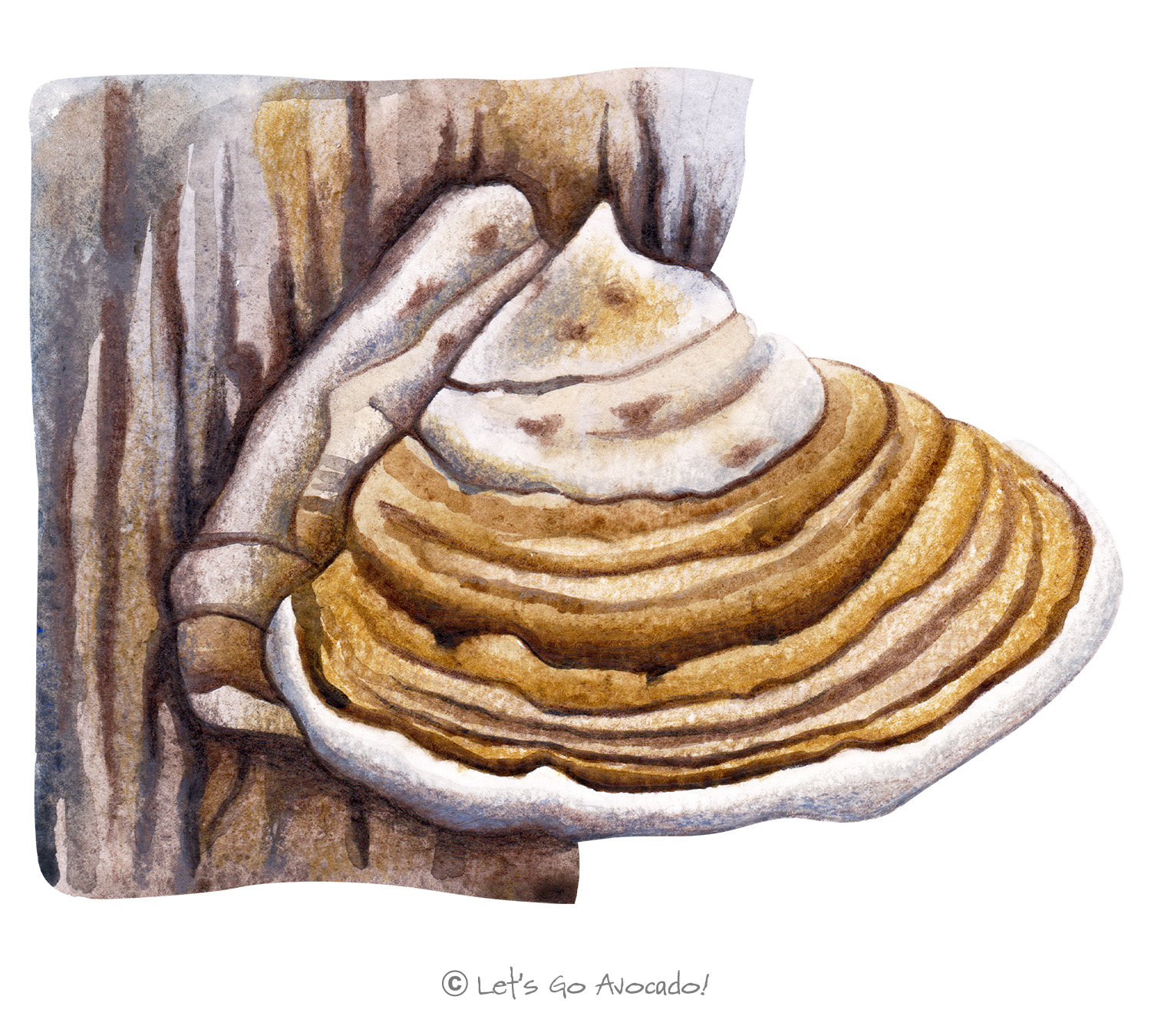

Artist’s Bracket
Artist's Conk
Ganoderma applanatum
This page may contain affiliate links.
Read our disclosure and privacy policy here.
The Artist’s Bracket is a well-known bracket fungus that is cherished not only for its ecological role but also for its unique utility in art. The pale white underside of the fungus can be easily etched or “drawn” upon, and these marks darken, resembling a sketch, hence the name. The sketches remain even as the fungus dries, making it a favorite for natural artists.
Artist’s Bracket
Common Name
Artist’s Bracket
Other Names
Artist’s Conk
Latin Name
Ganoderma applanatum
Distribution
This fungus is found globally, mainly in temperateTemperate refers to a climate that’s not too hot and not too cold, with moderate rainfall and distinct seasons like spring, summer, fall, and winter. You’ll find temperate areas in parts of North America, Europe, and Asia. It’s the kind of climate where you can see a wide variety of plants and animals, including deciduous trees that lose their leaves in the fall. regions across North America, Europe, Asia, and other regions.
Appearance
It’s a perennial, woody bracket fungus that’s flat and fan-shaped. The upper surface is brown to grayish-brown, often with a slightly lumpy texture, while the underside is white and turns brown when bruised. It’s this feature that’s exploited for “drawing.”
Size
Typically ranges from 10 to 60 cm across.
Habitat
Found on dead and decaying hardwood trees, especially oaks and beeches.
Diet
Saprophytic; decomposes wood.
Lifecycle
Starts as spores that settle on suitable wood, germinate, and grow as white myceliumMycelium is like the ‘root’ or the ‘body’ of a fungus. Just as plants have roots, fungi have mycelium. It is made up of tiny thread-like structures called hyphae that spread out in the soil or other materials where the fungus grows. Learn More. Over time, the fruiting body (the bracket) forms and becomes woody. This fungus is perennial, so it grows larger year by year, releasing spores from its underside.
Defense Mechanisms
The tough, woody texture is not particularly palatable to many animals. Its bitter taste also deters many herbivoresHerbivores are animals that eat plants as their main source of food. They are like the vegetarians of the animal kingdom. Just as you eat fruits, vegetables, and other plant-based foods, herbivores munch on leaves, flowers, grass, and other parts of plants..
Ecological Importance
Helps decomposeDecomposition is a natural process that happens when living things, like plants, animals, or other organic matter, break down into simpler substances. It is a part of the circle of life and plays an essential role in recycling nutrients back into the environment. Learn More and recycle nutrients from deadwood, playing an essential role in forest nutrient cycling.
ConservationThe act of protecting and preserving natural resources and the environment. Conservation efforts are important to protect beavers and their habitats. Status
Not of particular conservation concern due to its widespread nature.

There’s a lot to explore right where we are, in our own neighborhoods and backyards! Join us while we get off the couch and explore the everyday wonders of nature, science, space, engineering, art, and anything else we stumble upon during on our adventures.







